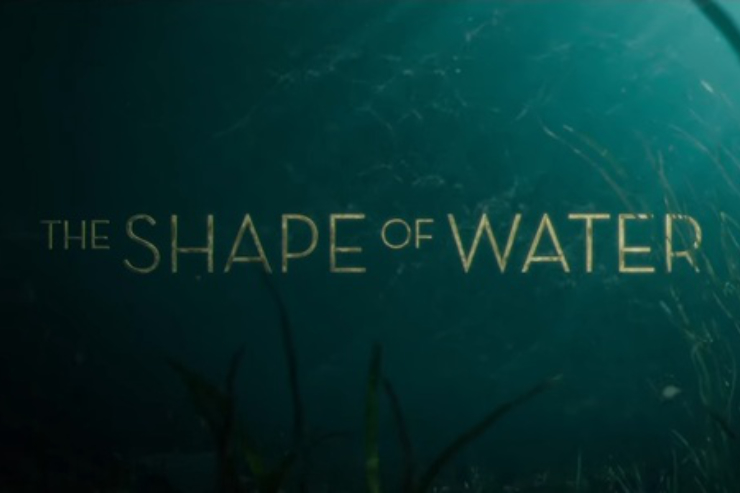
SPOILER ALERT!
I knew that The Shape of Water would win the Academy Award for Best Picture. It checked three of the major Hollywood boxes: celebration of oppressed people, valorization of complete sexual freedom, and a Christian villain. It used to be that a black hat or shifty eyes or a foreign accent would give someone away as the bad guy, but now, it is the quoting of the Bible.
Of course, this shouldn’t surprise us in regard to The Shape of Water, for the auteur behind the film is the Mexican director Guillermo del Toro, who has gone on record many times as a despiser of religion, especially Catholicism. In a conversation with Charlie Rose, he admitted to being “a raging atheist,” and in a 2007 interview, he said, “I hate structure; I’m completely anti-structural in terms of believing in institutions. I hate them. I hate any institutional social, religious, or economic holding.” One might wonder what he makes of the studios that produce his films or the banks that invest his money, but I’ll leave those considerations for another day.
The title of his award-winning movie gives away the game, for the one thing that water does not have is shape. Its very essence is fluidity, formlessness, and freedom from structure. And this is precisely what is celebrated in the film. Against all odds and despite enormous obstacles, the heroine, a young, fearful, and marginalized woman, falls in love with an amphibian creature whom the government (structure: boo!) keeps locked up in a laboratory facility. The lady and the aqua-man build up over time a mutual trust, give their consent to one another, and finally, with the help of well-intentioned friends, manage to do the deed. I gathered that the hope of the director was that the viewer would thrill to this brave flouting of convention and rejoice in the trans-species love on display. For sex, apparently, has no proper form, objective structure, or natural end; it has the shape of water, flowing according to the desires of those who engage in it.
All of this actually put me in mind of Paul Tillich, one of the most significant Christian theologians of the last century. In his massive Systematic Theology, Tillich presented what he called the three ontological polarities, that is to say, tensions or contraries that characterize living things at every level. A good part of the drama and difficulty of human life follows upon our consciousness of living in the midst of these polarities. The first is dynamics and form. Plants, animals, and human beings could not live unless they were marked by novelty, movement, change, and the constant adaptation to the environment in which they find themselves. At the same time, all such organisms possess a fundamental structure that preserves their identity and stability across time. Without a reliable cellular, molecular, muscular, and nervous system, no animal or plant could subsist; instead it would be, in short order, absorbed by its surroundings. What we call “life” is in fact a subtle and carefully calibrated balancing act between dynamics and form; too much of one or the other would spell disaster.
The second of the ontological polarities is freedom and destiny. The former is liberty to choose, to move, to be different, to find one’s own path. Without freedom, no living thing could possibly thrive. Tillich remarks that the uniqueness of each tree, plant, animal, and person is, to a large extent, a function of this capacity. However, freedom is in tension with destiny, by which Tillich means the substrate upon which freedom stands, the givens with which freedom works. Liberty never operates in a vacuum, nor is it capable of positing itself; rather, it works with the raw material of one’s family experience, education, language, body, and culture. Throughout life, these two poles remain in creative tension with one another, but any one-sided resolution would result in collapse: either the chaos of pure arbitrariness or the petrification of static traditionalism.
The third polarity is individualization and participation. Each person wants to be herself, to find her path, to stand out from the crowd. In fact, if individualization doesn’t take place, one remains in a good deal of psychological peril, permanently infantilized or simply a cog in some societal structure. But at the same time, everyone longs to belong to something beyond herself, to participate with others in a shared political, religious, or cultural endeavor. Tillich saw the Germany of the 1930s as a society that had oscillated dangerously in the direction of pure participation: as the Nazi slogan had it, “one people, one nation, one Fuhrer.” But he saw the Western countries as having moved (admittedly not as drastically) in the opposite direction, toward pure individualism. Once again, the delicate balance between the two is the key.
A film called The Shape of Water, produced by someone who, by his own admission, hates structure, is sadly emblematic, I fear, of a society that is indeed in danger of oscillating to one side of the Tillich polarities. Is it not the case that the leading avatars of our culture consistently valorize dynamics, freedom, and individualization, while they just as consistently denigrate form, destiny, and participation? And is not sexuality the thin edge of the blade? Increasingly, any limits that have been classically set to sexual expression are swept away as fussy holdovers from a primitive time, and any sense that sexuality possesses a form and finality independent of individual free choice is mocked as an arbitrary imposition.
But if Tillich is right, this one-sidedness is a sign of sickness. The Biblical authors appreciated water as a positive symbol for life, but they also understood it as a symbol of chaos and formlessness. Think of the Tohu-va-bohu (watery abyss) from which God drew creation. We do indeed need dynamics, freedom, and individualism, but if all we have is the shape of water—which is to say, no shape at all—we’re actually in bad shape.
Editor’s Note: Bishop Barron’s article first appeared March 20, 2018 on the Word on Fire website and is presented here with the kind permission of the author.















